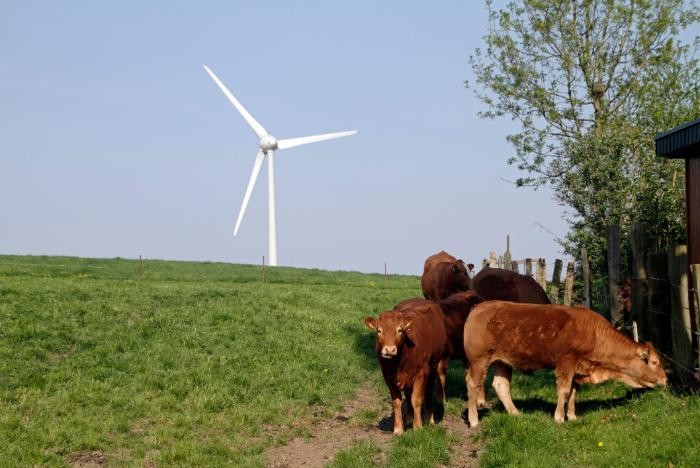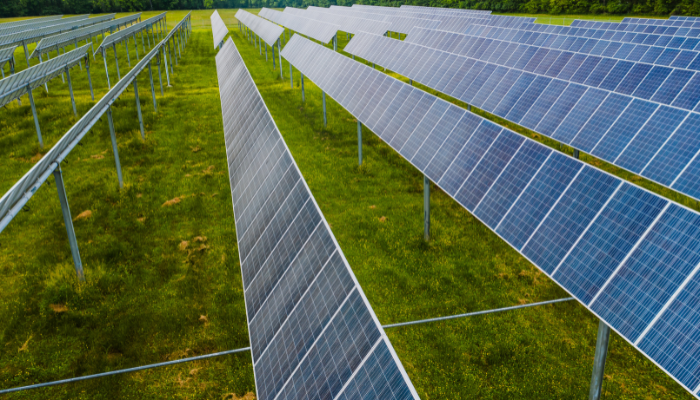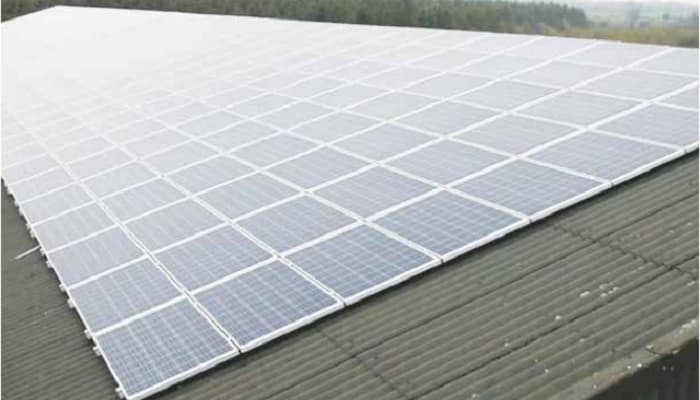Unlocking renewable energy potential for farmers in Ireland

The renewable energy sector in Ireland is evolving fast, especially in areas where grid capacity has supported a surge in development, Energy and Rural Development Specialist at Teagasc, Barry Caslin tells us more.
Large-scale solar farms – often around 80 hectares (200 acres) or 50 MW (roughly 4 MW per acre) – and battery storage projects are among the most active growth areas right now.
Farmers are increasingly partnering with experienced renewable energy developers through option and lease agreements. These arrangements allow developers to take on the risk and cost of securing planning permission and grid connections. Once those hurdles are cleared, long-term leases activate, and construction begins. These agreements often run for 30 to 40 years and can offer farmers returns well above traditional agricultural rents at a time when farming faces ongoing uncertainty.
The grid connection challenge and upgrades underway
Securing a grid connection remains the critical factor for project viability. The surge in demand for grid capacity means it can be difficult to get connected quickly. ESB Networks and EirGrid are playing vital roles in upgrading and expanding Ireland’s electricity grid to better accommodate renewable energy.
ESB Networks is reinforcing the distribution network, modernising infrastructure, and supporting local renewable projects on farms. Meanwhile, EirGrid is expanding transmission capacity through new high-voltage lines and substations, innovating with programmes like DS3, and planning for up to 80% renewable electricity on the grid by 2030 – including offshore wind connections. Together, they are modernising the grid to meet Ireland’s ambitious climate and renewable goals.
What is the Renewable Electricity Support Scheme (RESS)?
The Government’s Renewable Electricity Support Scheme (RESS) is central to Ireland’s renewable energy future. The upcoming RESS 5 auction, running from 28 August to 10 September, is particularly important. It’s the fifth auction under the scheme and likely the last chance to bring significant new wind and solar projects online before 2030 – the year Ireland faces potential EU fines estimated between €2 billion and €8 billion for missing renewable targets.
RESS provides guaranteed tariffs, giving developers certainty to invest in renewable projects. RESS 5 is critical for hitting government targets of 8GW of onshore wind and 9GW of solar PV by 2030, aiming for renewables to supply around 80% of electricity demand.
Previous auctions like RESS 1 and RESS 2 awarded capacity, but many projects have yet to be built due to planning delays and grid challenges – including judicial reviews lasting up to five years. These obstacles have increased risks for developers, pushing bid prices higher to make projects viable.
Large solar and wind projects on farms
Solar farms can cover hundreds of hectares and often involve multiple landowners. Securing land rights, planning permissions, and grid connections is complex, so developers usually arrange longer option agreements to secure sites and manage legal complexities.

Onshore wind, which faced planning restrictions in recent years, is cautiously returning. Developers are targeting isolated sites with good access and minimal residential impact. Some policy shifts are easing barriers, but planning remains a challenge.
Microgeneration and minigeneration – starting small
For farmers interested in smaller-scale renewable projects, microgeneration and minigeneration offer accessible entry points. An important support for farmers investing in these smaller-scale systems is the Solar Capital Investment Scheme (SCIS).
SCIS provides a grant that covers up to 60% of the capital cost of solar installations, significantly reducing upfront expenses and shortening the payback period. This makes it more affordable for farmers to own and operate their own renewable energy systems, helping to power their farm enterprises – whether pig, poultry, or dairy – and even supply electricity to their homes when on the same Meter Point Reference Number (MPRN).
- Microgeneration includes rooftop solar or small wind turbines up to around 6kVA (about 25 amps single-phase). These systems mainly supply your own electricity needs, with any surplus exported to the grid. Connecting a microgenerator requires submitting a notification to ESB Networks, ensuring compliance with safety standards, and installation by a registered contractor.
- Minigeneration covers systems roughly between 6kVA and 50kVA (up to 72 amps single- or three-phase). These installations are still primarily for self-consumption but can export more energy. Connecting requires a formal application, a technical assessment by ESB Networks, and acceptance of a connection offer.
Both types of connections ensure that the maximum export capacity does not exceed your maximum import capacity to maintain grid stability.
Small-scale generation – bigger projects, bigger impact
If your project is larger – between 50kVA and 200kVA – it falls under small-scale generation. This can include solar PV or synchronous generation such as Combined Heat and Power (CHP). The connection process is more involved, requiring detailed applications, technical diagrams, and payment of a higher application fee. Connection offers can take 8 to 10 weeks or longer depending on complexity. Like smaller scales (Micro and Minigeneration), export capacity cannot exceed import capacity.
The Small-Scale Renewable Electricity Support Scheme (SRESS) supports projects between 50kW and 6MW with guaranteed tariffs depending on whether your application is community based, farmer or SME. SRESS encourages investment in solar and wind. However, unless there is existing grid capacity beside a proposed project – industry representatives caution that high costs for upgraded grid connections may limit the financial viability of many projects, as SRESS supports might not deliver a timely payback for investors.
Private wire agreements – bypassing the grid
A new policy is set to revolutionise how electricity connections work. Until now, ESB Networks has been the sole operator allowed to install and manage electricity cables. But growing demand has led to delays frustrating many, including farmers.
The government has agreed to allow “private wires,” enabling renewable generators like wind or solar farms to connect directly to nearby customers or factories without going through the national grid. Neighbours could also share surplus electricity generated from rooftop solar panels. Even electric vehicle (EV) owners will be able to install their own cables for on-street charging, though planning permission will still be required.

This new system, expected to be legally enacted within a year, will be overseen by the energy regulator (CRU) to ensure smooth operation. For farmers, private wires could mean quicker, more flexible connections to local users, reducing grid bottlenecks and making renewables more practical and accessible in rural communities.
Why renewables matter for farmers
Renewable energy is becoming a vital part of Ireland’s rural economy. For farmers, renewable projects offer a valuable opportunity to diversify income, reduce dependence on traditional farming revenues, and contribute meaningfully to national climate goals.
When it comes to larger renewable projects under the Renewable Electricity Support Scheme (RESS), these are usually developed by professional developers who lease land from farmers. These leases often offer rents well above current agricultural land rental rates, providing an attractive, long-term income stream. Many of these larger schemes are owned by institutional investors, such as pension funds, which helps bring significant capital into rural areas.
On the other hand, smaller-scale renewable projects, such as microgeneration, are typically owned by the farmers themselves. Many take advantage of the 60% Solar Capital Investment Scheme (SCIS), which significantly reduces the upfront costs and shortens the payback period for these investments. These smaller systems enable farmers to generate a large portion of the energy they need for pig, poultry, or dairy enterprises, or to supply electricity to their farmhouses – particularly when the farm and dwelling share the same Meter Point Reference Number (MPRN).
Success in renewables depends on careful planning, understanding grid capacity, and navigating regulatory requirements. Farmers should work with trusted advisors, accountants, solicitors, and renewable energy experts to make informed decisions.
If you are a farmer considering renewable electricity, now is the time to explore your options. Microgeneration and minigeneration offer manageable, owner-operated entry points, while RESS opens the door to larger, developer-led projects with guaranteed financial backing. Keep a close eye on planning and grid developments and consider private wire arrangements if you’re near commercial electricity users.
Renewables are reshaping rural Ireland. It’s an exciting, sometimes complex opportunity not just to power your farm’s sustainability, but to contribute to Ireland’s long-term energy future as well.
More from Teagasc Daily: Unlocking Ireland’s rural income potential
More from Teagasc Daily: Diversifying Irish agriculture – navigating new paths to farm resilience
More from Teagasc Daily: Harvesting renewable energy with SRESS
